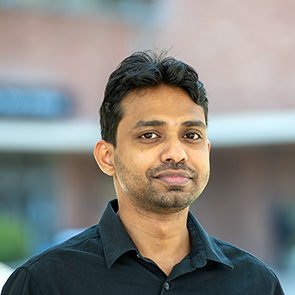What got you interested in researching the breathing movements of mammals?
One of the central goals of neuroscience researchers is to understand how the brain generates behavior. Breathing is a remarkable behavior that not only regulates blood gas homeostasis but is tied to several essential behaviors such as vocalization/speech, swallowing, and expression of emotions, e.g., laughter, sighs, etc. Thus, the neural mechanisms that enable breathing movements are highly complex. Further, breathing disorders in central sleep apnea, Parkinson's disease, Multiple System Atrophy, Rett syndrome, epilepsy, and in response to opioids cause ceased breathing (apnea) that can even be fatal. I am interested in understanding how the network of interconnected neurons in the brainstem generates the time and pattern of each breath under various physiological states to understand their dysfunction under pathological conditions better.
Could you give us a gist of your academic and research journey so far?
I completed an integrated MS-Ph.D. degree from the Indian Institute of Science, Bangalore. During my Ph.D., under the supervision of Prof. Rishikesh Narayanan, I focused on understanding how neurons process and store information, and communications between neurons and astrocytes. Thereafter, I completed my postdoctoral training in Prof. Jack L Feldman’s laboratory at the University of California at Los Angeles. At UCLA, I worked on deciphering the mechanism of inspiratory rhythm generation in a brainstem circuit called the preBötzinger complex.
In an article for Medical News Today you mentioned that it is important to study neurons and that the new finding on rhythmic pattern of neurons for breathing would answer questions that have persisted for centuries. Why do you think these questions remain unanswered for so long?
The first bottleneck was to find the brain region that generates breathing rhythm. Surprisingly, breathing-related activity can be found in several brain regions; thus, localizing the anatomical core of the breathing central pattern generator was challenging. Prof. Feldman and his group discovered this kernel for breathing in the brainstem and named it as preBötzinger Complex in 1992. After this discovery, it was assumed that deciphering the mechanism of rhythm generation would be straightforward. But it wasn’t the case. Breathing CPG is highly complex and has several neuronal sub-types with different properties. Targeting specific subtypes to understand their role in breathing was not possible until the modern advances in genetic engineering and advanced optical techniques.
What are the barriers that such research faces?
The breathing neuroscience research community is very small, therefor the research turnover rate is lower than in other disciplines. Breathing appears deceptively simple; thus, many may not attract much young research.
Is there any advice you would like to give to researchers beginning their career in this field?
It is an exciting time to study breathing. Breathing impacts the brain and the body in astonishing ways. Emerging lines of evidence reveal that breathing-related rhythms bind several brain regions through modulation of neuronal activity. Breathing rhythm regulates behaviors such as sensory perception, arousal and affect emotion and cognition. Thus, there are several interesting questions to address in breathing.
What are your plans to expand this laboratory? And what would you look for in prospective candidates such as students and fellow researchers?
My laboratory aims to understand signal-processing mechanisms in the brain that enable the expression of highly robust yet remarkably labile breathing patterns in mammals. We employ an interdisciplinary approach spanning computational and experimental neuroscience regimes to understand the neural control of breathing. We investigate the roles of network topology, synaptic dynamics, and active dendritic computations in the preBötzinger Complex. Towards this end, we employ intersectional genetics, in vitro and in vivo electrophysiology, pharmacology, and advanced optical techniques to investigate neuronal control of breathing in health and disease.
I am looking forward to mentoring curious individuals eager to pursue interdisciplinary research.
For more info abour Dr Ashhad's lab: https://www.ncbs.res.in/faculty/sufyan










0 Comments